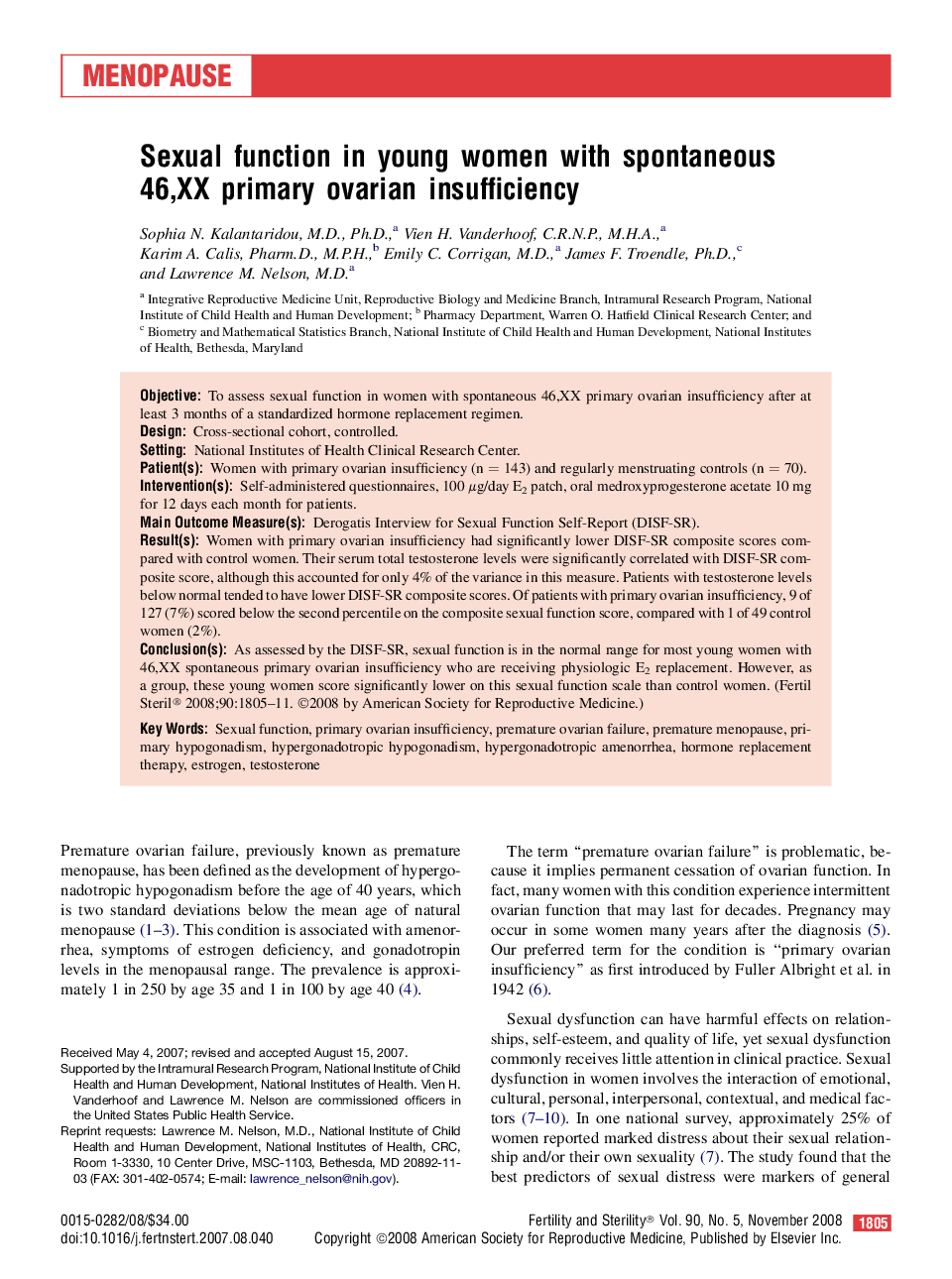| Article ID | Journal | Published Year | Pages | File Type |
|---|---|---|---|---|
| 3941625 | Fertility and Sterility | 2008 | 7 Pages |
ObjectiveTo assess sexual function in women with spontaneous 46,XX primary ovarian insufficiency after at least 3 months of a standardized hormone replacement regimen.DesignCross-sectional cohort, controlled.SettingNational Institutes of Health Clinical Research Center.Patient(s)Women with primary ovarian insufficiency (n = 143) and regularly menstruating controls (n = 70).Intervention(s)Self-administered questionnaires, 100 μg/day E2 patch, oral medroxyprogesterone acetate 10 mg for 12 days each month for patients.Main Outcome Measure(s)Derogatis Interview for Sexual Function Self-Report (DISF-SR).Result(s)Women with primary ovarian insufficiency had significantly lower DISF-SR composite scores compared with control women. Their serum total testosterone levels were significantly correlated with DISF-SR composite score, although this accounted for only 4% of the variance in this measure. Patients with testosterone levels below normal tended to have lower DISF-SR composite scores. Of patients with primary ovarian insufficiency, 9 of 127 (7%) scored below the second percentile on the composite sexual function score, compared with 1 of 49 control women (2%).Conclusion(s)As assessed by the DISF-SR, sexual function is in the normal range for most young women with 46,XX spontaneous primary ovarian insufficiency who are receiving physiologic E2 replacement. However, as a group, these young women score significantly lower on this sexual function scale than control women.
